
Try out Search Coach and Domains when researching choosing a pet.
- Subject:
- Educational Technology
- Professional Learning
- Material Type:
- Lesson Plan
- Provider:
- Microsoft
- Provider Set:
- Microsoft Education
- Date Added:
- 02/27/2023

Try out Search Coach and Domains when researching choosing a pet.

"Explore current electricity by creating your own circuit! Learn (or review) the parts of a complete
circuit, investigate amps, volts, and watts, and understand the speed of an electron! Students will
participate in a facilitate group activity and create their own light-up circuit cards to take home with
them."

"Explore current electricity by creating your own circuit! Learn (or review) the parts of a complete
circuit, investigate insulators and conductors, and understand how changing parts of the
circuit affect how it works! Students will participate in an exploration activity and create
their own circuits out of items found around the house.
Based on: https://www.scrappycircuits.com/core-bricks"
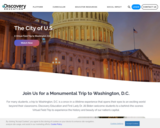
For many students, a trip to Washington, D.C. is a once-in-a-lifetime experience that opens their eyes to an exciting world beyond their classrooms. Discovery Education and First Lady Dr. Jill Biden welcome students to a behind-the-scenes Virtual Field Trip to experience the history and beauty of our nation’s capital.
Designed for students in grades 4-8, this action-packed tour features remarkable special guests and give viewers an inside look at six landmark locations:
The White House
The U.S. Capitol Building
The Supreme Court
The Martin Luther King, Jr. Memorial
Arlington National Cemetery and the Tomb of the Unknown Soldier
The Smithsonian National Air and Space Museum

Try out Search Coach and Domains when researching Civil Rights: The Chicano Movement.

How does a bill become a law? What is the role of Congress and the President in this process? How did the Clean Water Act of 1972 become a law?
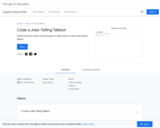
Learn how to create a Joke-Telling Talkbot using coding in Google.

In this lesson, students explore how writers use sensory imagery as a literary device to make text more meaningful for the reader. They begin by using all of their senses to describe known objects such as pasta, chocolate, or grapes. Students first feel and listen to the object, in a bag, before then taking it out of the bag to look at, smell, and taste it. They then use at least three senses to write a poem about the object they've described. Next, they evaluate how this literary device functions in Pat Mora's poem “Echoes.” As students read this poem, they look for sensory images and write an explanation of how these images contribute to the meaning of Mora's poem. Finally, students think about how sensory images work in their own poems and then make appropriate revisions to their work.
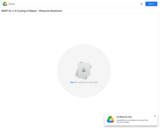
Students will construct a model of the carbon cycle to explore the cycling of matter in decomposition. Students will design a process to compost food waste and recycle products used during lunchtime to reduce the amount of garbage the school produces.

This lesson centers around the How AI Works: Computer Vision video from the How AI Works video series. Watch this video first before exploring the lesson plan.
Students learn how computer vision works. They first look at optical illusions to identify the features of the drawing that their eyes noticed. Students watch a video explaining computer vision and how a computer "sees". They design an algorithm that uses a network to decide what number the seven segment display is displaying. Finally, students test their algorithm.
This lesson can be taught on its own, or as part of a 7-lesson sequence on How AI Works. Duration: 45 minutes
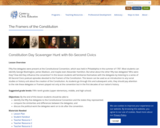
Fifty-five delegates were present at the Constitutional Convention, which was held in Philadelphia in the summer of 1787. Most students can identify George Washington, James Madison, and maybe even Alexander Hamilton. But what about the other fifty-two delegates? Who were they? How did they influence the convention? In this lesson students will familiarize themselves with the delegates by listening to a series of 60-Second Civics podcast episodes devoted to the Framers of the Constitution.

This is a lesson plan created by Copyright & Creativity for Ethical Digital Citizens. This lesson reinforces fair use concepts and the basic protections and limitations of copyright. Students learn how copyright encourages creative expression. This resource includes the lesson plan (pdf) and links to an accompanying Google Slides presentation and YouTube video.

Students will explore Newton's laws of motion through a variety of activities, including an investigation that involves collisions.
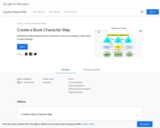
Learn how to create Book Character Map using Google Drawings.
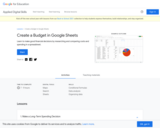
Students learn to create and manage a budget in Google Sheets.
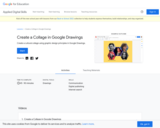
In this Google Applied Digital Skills lesson, students will create a collage using Google Drawings.
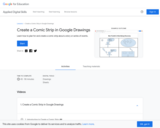
Learn how to create Comic Strips with your students using Google Slides, Drawings, and Jamboard.
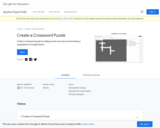
Students will create a crossword puzzle using Google Sheets
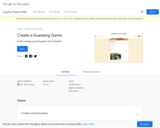
Students learn to use Google Forms to create a guessing game from course content.
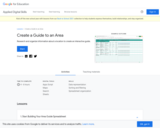
Students learn to create an interactive guide of an area using Sheets and Maps.